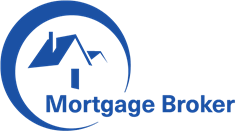What Is a Mortgage?
Mortgage is a general term used for a type of loan secured by real property. It is a lien on the property that gives the lender the right to seize and sell it if the borrower defaults on payment terms.
Mortgages are widely used in many countries to finance the purchase of a home and other properties. The most common type of mortgage is a residential fixed-rate mortgage. This type of mortgage is typically repaid with a single monthly payment consisting of both the principal and interest.
A borrower’s ability to qualify for a mortgage is based on their income, assets, and debt. During the underwriting process, lenders typically run a credit check and review property appraisal reports to make sure the borrower is able to repay the debt. Once the underwriting process is complete, the lender will issue a formal commitment letter detailing the loan terms.
The term mortgage is most often associated with a home loan, but it can also refer to any other type of property financing arrangement. It can also refer to an arrangement where the borrower agrees to surrender ownership of a property or other asset at a future date in exchange for the right to use and enjoy that asset until then.
Most mortgages are backed by the collateral of an owner’s fee simple interest in real property. The property serves as a form of security for the borrower’s promise to pay back the mortgage loan with interest. In the United States, mortgages are commonly secured by the equity in a borrower’s home or other property. In some jurisdictions, other forms of security may be available.
Many mortgage loans are government-sponsored options such as those from the Federal Housing Administration, Department of Veterans Affairs, and the USDA. These programs require upfront and annual mortgage insurance or guarantee fees, which are designed to offset the financial risk of lending to borrowers with lower credit scores or smaller down payments.
Other mortgage types are privately sponsored and backed by private investors or banks. These loans can be structured as either fully amortizing or non-amortizing, with repayment due at a specific date, or through a combination of both. They can also be repaid in full before the end of the loan term, or may have other repayment options.
Regardless of the structure, most mortgages have a long life span. Once the mortgage closes, it usually becomes a conforming loan that can be purchased by Fannie Mae or Freddie Mac, the government-sponsored enterprises (GSEs) that keep the mortgage markets liquid. Consequently, most lenders sell their mortgages to Fannie and Freddie shortly after closing, which frees up cash and allows them to continue issuing loans.
The main factors that determine the cost of a mortgage are the interest rate and payment amount. When calculating a monthly mortgage payment, it is important to understand that most of the payment at first will go toward paying interest. Therefore, it’s best to look at the base mortgage rate and not the annual percentage rate (APR). Also, it’s helpful to know that mortgage rates are generally calculated using a 360-day year.
